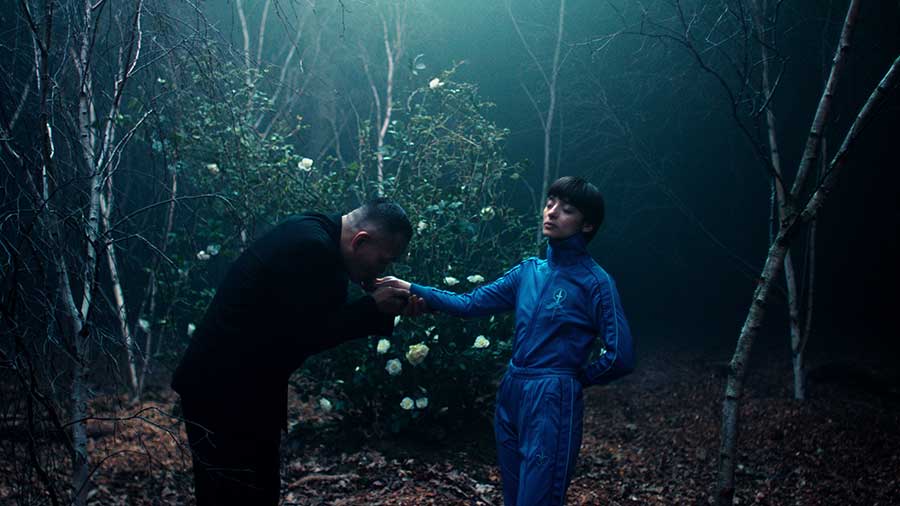Read also:
How to Watch FX Live Without CableHow To Watch AMC Without CableHow to Watch ABC Without CableHow to Watch Paramount Network Without CableRefn can only use so much style to cover up the lack of substance in this plodding noir-thriller series for Netflix.
Episode one begins with a chorus of pig screams. The camera pans through endless cages with the poor little oinkers cramped inside. Then we cut to a woman being strangled. We can’t see her face or who’s attached to the hands squeezing the life out of her. The victim cries out, but we can’t hear anything over the pigs.
It’s evident that show creator Nicolas Winding Refn (he also directs all six episodes) wants us to be thinking about pigs at this moment. But who are the real pigs in this noir thriller? It could be the poor women who become ensnared in a prostitution ring in the first episode, trapped against their will until a violent end. They could be the criminals of the Danish underworld who run the illegal brothel. Sven (Per Thiim Thim), the woman’s husband helping to run the operation, literally grunts and screams like a piggy.
For Refn, it doesn’t matter, because it’s all about the vibes. Like with his 2011 hit, Drive, your enjoyment of Copenhagen Cowboy will go as far as you can tolerate Refn’s visual aesthetic. The primary colors that paint the entire frame with a neon glow, the pulsing Cliff Martinez score, and of course, the Miami Vice font. There’s even a similar protagonist to Ryan Gosling’s cool as a cucumber Driver character.
This time it’s actress Angela Bundalovic who gets to wear an iconic outfit, looking stoic as she gets her vengeance. She plays Miu, a mysterious woman lured to Denmark by Rosella (Dragana Milutinovic) because she thinks Miu can help get her pregnant with her unique “Lucky” powers. Miu’s mysterious supernatural powers do show up as the season progresses, but not in enough time to help Rosella, who traps Miu against her will, leading Miu to escape and begin an odyssey through the criminal underworld, looking for revenge against those who harmed her in the past.

Bundalovic gives an effectively chilly performance, and like Gosling in Drive, makes staring at nothing look easy and badass. Still, her character doesn’t get much nuance besides being supernatural and observing those around her. It’s too close to the magical protagonist from HBO’s canceled John From Cincinnati.
Refn returns to his native Denmark for the series (I like to assume “Copenhagen Cowboy” is the nickname that he demands everyone call him), but the show could be set anywhere. It’s because the themes of exploitation and murderous revenge are universal, but also because Refn isn’t known for his dialogue, which is used sparingly in any language he works in. He’s going for moments, like when we discover the identity of the woman murdered in the pigsty at the end of episode one, or Miu standing in pools of red and green lights as she lights a house on fire.
There’s not much to hang onto beyond the visual flourishes, however. Even if the story has an episodic structure that lends itself to television, there are many pockets of tedium over the six hours of show here. Watching the camera slowly zoom in on a character smoking a cigarette or stabbing a guy is cool, but after hours of it, I felt like I was hanging out with that friend who knows how to have a good time, but you realize how sad and empty their lives are if you spend too much time with them.
There may not be substance behind the style, but it goes a long way when your style includes Cliff Martinez on the soundboards. Martinez continues to do exceptional scoring work here with his usual toolbelt of throbbing bass and intoxicating synths. It does most of the emotional heavy lifting here, especially towards the end of the first episode when the music swells with metallic guitars and the bouncing bass of a New Order jam.
The show is a provocative experience in small bursts, but ultimately comes out hollow when you dig an inch deep. There are still lingering questions, like why does Sven make those pig noises? Only Refn, the Copenhagen Cowboy himself, knows for sure.
Copenhagen Cowboy is now available on Netflix.